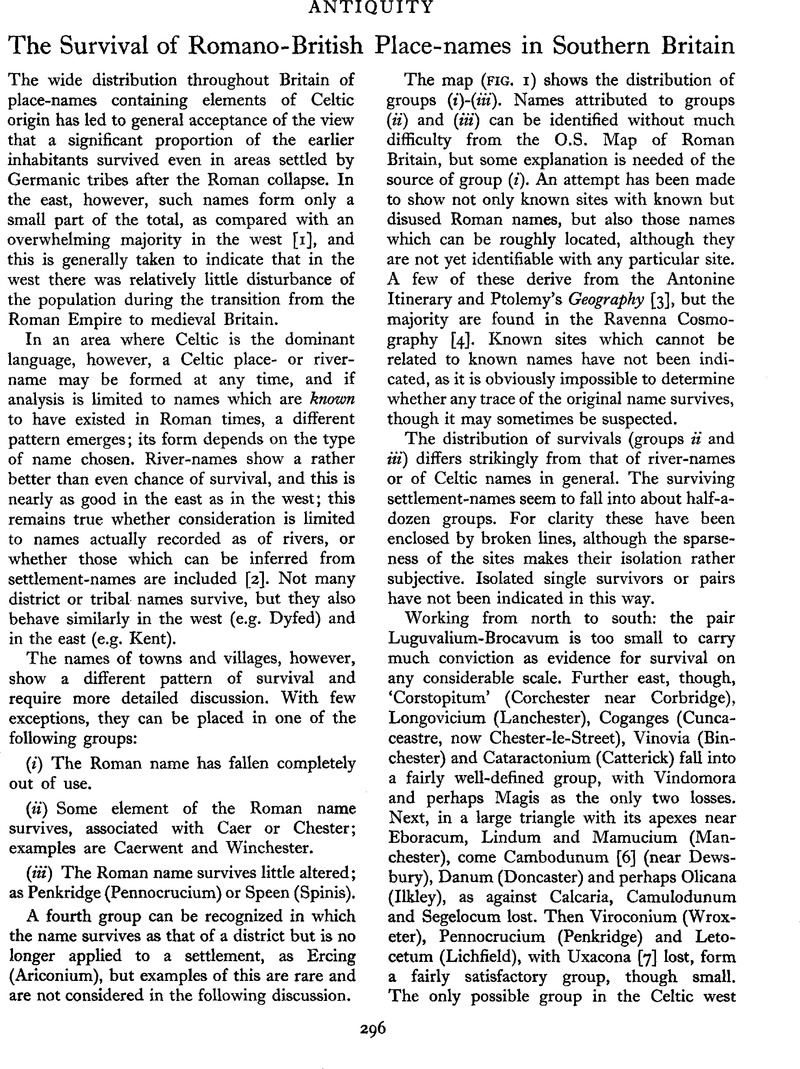Article contents
The Survival of Romano-British Place-names in Southern Britain
Published online by Cambridge University Press: 26 May 2015
Abstract

- Type
- Notes and News
- Information
- Copyright
- Copyright © Antiquity Publications Ltd 1964
References
[1] E.g. for river-names, Jackson, K. Language and History in Early Britain (Edinburgh, 1953), map p. 220.Google Scholar
[2] E.g. Seiont (Segontium, Caernarvon); Der-went (Derventio, Littlechester).
[3] Conveniently summarized in the text which accompanies the O.S. Map of Roman Britain (Chessington, 1956).
[4] Edited with comments by Richmond, I.A. Crawford, O.G.S. and Williams, I. Archaeologia, xeni, 1949, I–50.Google Scholar The identifications made here and in the O.S. Map have been accepted uncritically, since the few which are open to dispute do not affect the general argument. The writer is indebted for valuable comments to Mr A. L. F. Rivet.
[5] Arch., xeni, 29.
[6] The name survived until the time of Bede. Arch., xcm, 43, under Pampocalia.
[7] Unless some faint echo of the name survives in Oakengates.
[8] Jackson, K. Journ. Roman Studies, 38, 1948, 57.CrossRefGoogle Scholar
[9] See Arch. Journ., cxix, 1962, 130-1 and on the name Arch., xcIII, 46, under Tamese. It was the presence of Dorchester which suggested that this zone should be regarded as a crescent rather than as two separate ovals.
[10] Anderita seems to have vanished as a settlement-name after its destruction (Anglo-Saxon Chronicle, s.a., 491) though it survived as a district-name.
[11] Jackson, Language and History in Early Britain, 225, is very relevant and makes many of the points suggested here, but does not consider the possible significance of known survivals as distinct from other Celtic names.Google Scholar
[12] Ibid., 108–12.
- 3
- Cited by




